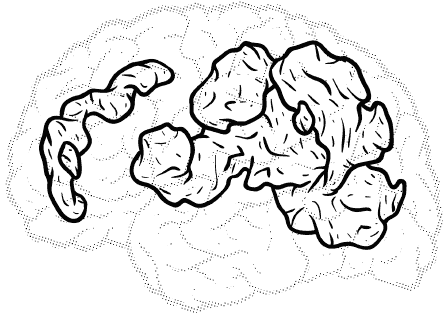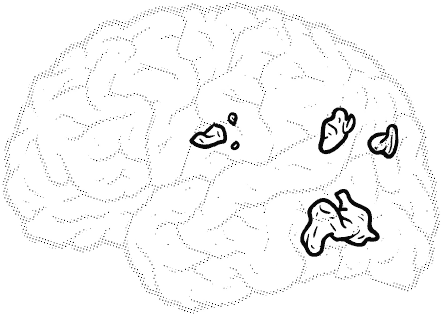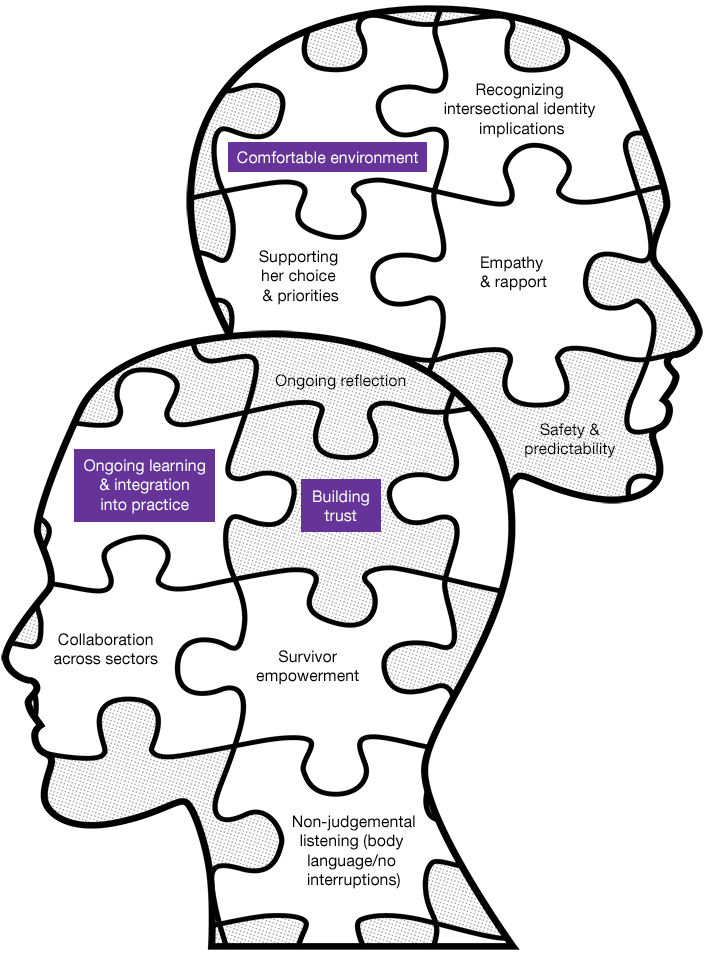“A healing centered approach to addressing trauma requires a different question that moves beyond “what happened to you” to “what’s right with you” and views those exposed to trauma as agents in the creation of their own well-being rather than victims of traumatic events.”
(Ginwright, 2018)

As you’ve read, the brain is remarkably adaptable – constantly altering its composition and function in response to what it encounters. That adaptability shapes a woman’s experience of trauma. It can also allow her to find relief – relief that may have eluded her for years. Our brain exists in networks, just as we do. Yes, trauma changes the brain, but, so does empathy (Jankowiak-Siuda, Rymarczyk, Grabowska, 2011).
Intersectional approaches to healing honour and explore valuable concepts of recovery, resiliency, and resistance beyond traditional Western approaches. Western approaches of “wellness” are focused on the absence of illness while Indigenous wellness may centre around physical, mental, emotional and spiritual balance and the bond between self, others, and the environment (Linklater, 2011). Approaches to healing within some Indigenous communities emphasizes the importance of storytelling, and the receiving of stories, as an act of resistance to oppression and violence. Storywork including poetry, story telling and song can be a powerful part of healing by creating community and generating new meaning out of personal and collective experiences (Clark, 2016).
Activated Brain Regions Prior to EMDR

Following EMDR

Researchers and practitioners can now measure the impact of therapeutic treatments by scanning the brain before and after treatments. The top image shows a brain with many areas which are overactive and may cause emotional dysregulation, flashbacks, feelings of numbness and cognitive fogginess and nightmares. The bottom image was taken after a series of EMDR (Eye Movement Desensitization and Reprocessing) therapy sessions, showing a reduction in overactivity. Numerous studies indicate the potential of treatments such as EMDR in affecting the function of the thalamus in particular, which can eliminate if not significantly reduce symptoms associated with PTSD. (Bossini et al, 2017).
Grounding Techniques
Grounding is a strategy meant to connect a woman to her immediate environment by utilizing her senses – sight, hearing, smell, touch, taste. It can be a helpful way for to manage flashbacks, high anxiety and dissociative symptoms. Grounding strategies include listening to music, ten or more deep cleansing breaths, running your hands in cool water, touching the earth, and tasks that involve repetition or focus such as a crossword puzzle.
A healing kit or bundle (or medicine bundle) may consist of one positive item connected to each of the five senses which can help to calm “high alert” responses, for example, a smooth stone to touch and sage to smell.

Food for Thought:
- What coping strategies have you noticed in older women who have experienced violence? How can these strategies be understood in the context of the intersections of her identity? (gender, age, sexuality, race, ability, etc.)
- What specific resources are available near your community for women with unique barriers who are experiencing trauma? This may include older women, women with disabilities, Indigenous women, racialized women, and immigrant and refugee women.
Note: Click on the purple labels below to learn more about
each element of trauma-informed principles depicted.
Colour the Trauma-Informed Principles image

Food for Thought:
- What does predictability, transparency, and collaboration mean for your sector? How do you share information about recordkeeping with survivors?
- Is the space where you meet with survivors accessible physically and culturally to older women? How could you modify this space to feel safer and more welcoming to an older, trans, Indigenous woman with a brain-injury?
- What was the most impactful part of this tool for you? How might you share this with other professionals in your field? Which concepts might be more difficult than others to integrate into your work?
Post Test Cue: Please visit https://www.


